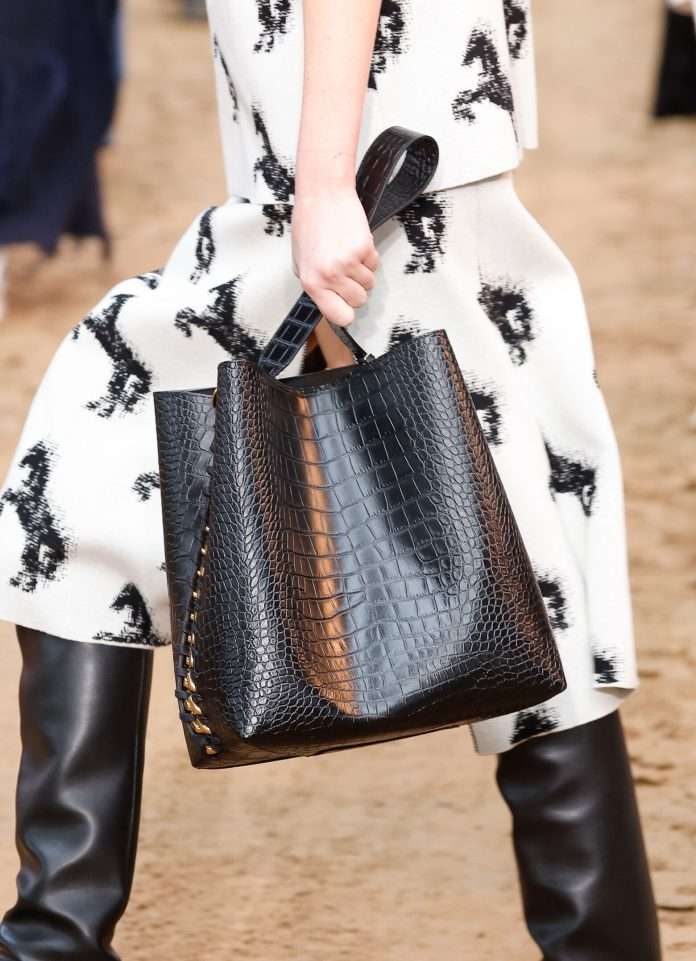Turns out, the sustainable, vegan alternatives to conventional animal-based leather look a lot like a brunch menu: pineapples, grapes, apples, and mushrooms (and even beer!).
Demand for sustainable, animal-free leather is on the rise. And brands are embracing it in kind — Karl Lagerfeld and BMW are fans of Desserto’s cactus leather. Hermès, Adidas, Balenciaga, and Stella McCartney like mushroom leather. Hugo Boss likes pineapple leather. Louis Vuitton and Valentino are using corn and other biomaterials to make leather. But that’s just the tip of the iceberg. What exactly is vegan leather, though? And how is it made?
First, let’s take a look at conventional leather.
Why replace animal leather?
“The leather industry’s toll on climate and biodiversity are far worse than commonly thought,” says the non-profit organization Collective Fashion Justice. “Using the leather industry’s own data we’ve calculated how much greenhouse gas is tied to your leather bag, and it’s not looking good.”
The core issue with conventional leather is where, or rather, whom, it comes from. Leather comes from cows — and cows are driving the agriculture sector’s impact on the climate crisis. Chiefly, there are emissions from methane and CO2 that come from cows — a big problem that needs to be addressed to hit Paris Agreement targets. Livestock make up at least 15 percent of total global emissions — more than all of the transportation sectors combined. According to the United Nations, cattle emit at least 231 billion pounds of methane into the atmosphere each year, which traps more heat than CO2.
Resource use is also a problem tied to conventional leather. From grain and fresh water to cattle’s deep ties to deforestation, it’s an unsustainable, controversial practice whether for protein or materials. On the finishing side, leather tanning is resource-intensive. Most animal leather is chrome-tanned, which produces toxic waste containing high levels of chrome. This type of tanning also produces an abundance of chrome shavings that can wind up in waterways and landfills. It can produce some 15,000 gallons of polluted water per day and up to 2,200 pounds of solid waste, including animal skin and hair.
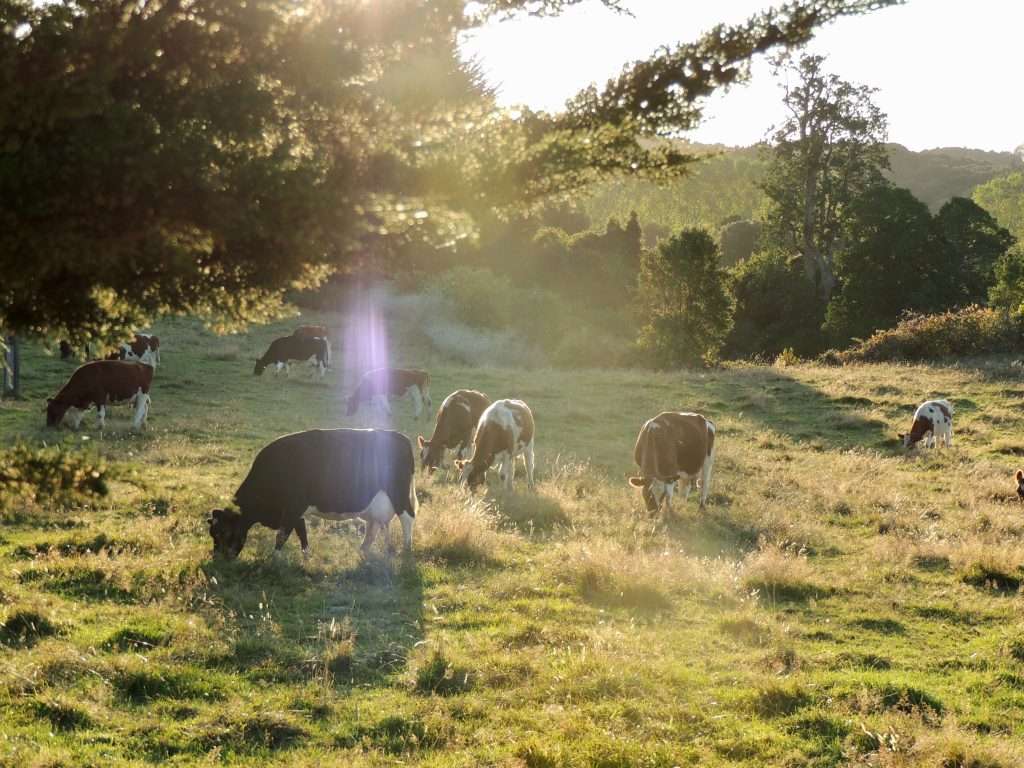
Cows are the primary source of leather but a number of other animals are also used for their skins including lambs and kangaroos. “Luxury” leather can often come from reptiles, like snakes and crocodiles. There’s also ostrich skin leather. Dogs and cats are sometimes used in leather production. But the majority comes from cows, typically raised in India, Brazil, and China. India’s relationship with cows is complicated, and because of religious restrictions, the animals can only be slaughtered in a few states. This means many of the cows are forced to walk (often called “death marches”) from where they’re raised to the state where they will die.
Animal rights groups including PETA (People for the Ethical Treatment of Animals) have taken a vocal stance against this practice. The animals are often mistreated and abused by handlers in order to get them to continue on this long walk to their execution. Other leather procurement is equally disturbing; crocodiles in Southeast Asia are often skinned alive. But, most often, leather is another profit source and co-product of the meat and dairy industries. So demand for beef and milk also push leather production.
What is vegan leather?
While it may seem counterintuitive, plants, fungi, and man-made materials make for materials that mimic the texture, pliability, and graininess of conventional leather. There’s even leather being grown from biomaterials, yeast cells and, most recently, beer waste. All claim to be as functional as cow leather but without the emissions or ethics issues.
Plant leather often makes use of agricultural waste. Whether that’s pineapple leaves, apple skins, or wine grape discards, this can become a new revenue stream for farmers as well as a sustainable alternative to conventional leather. And it helps to keep biomass out of landfills, too. Recent examples include Stella McCartney turning wine grape waste from Veuve Clicquot into leather bags. Some plastics are being upcycled into vegan leather substitutes as well, which can help address our global plastic problem. These are some of the most sustainable vegan leather materials.
Vegan types of leather
From plants and fungi to bacteria, yeast, and upcycled materials, the types of vegan leather are as impressive as you can imagine.
Plants
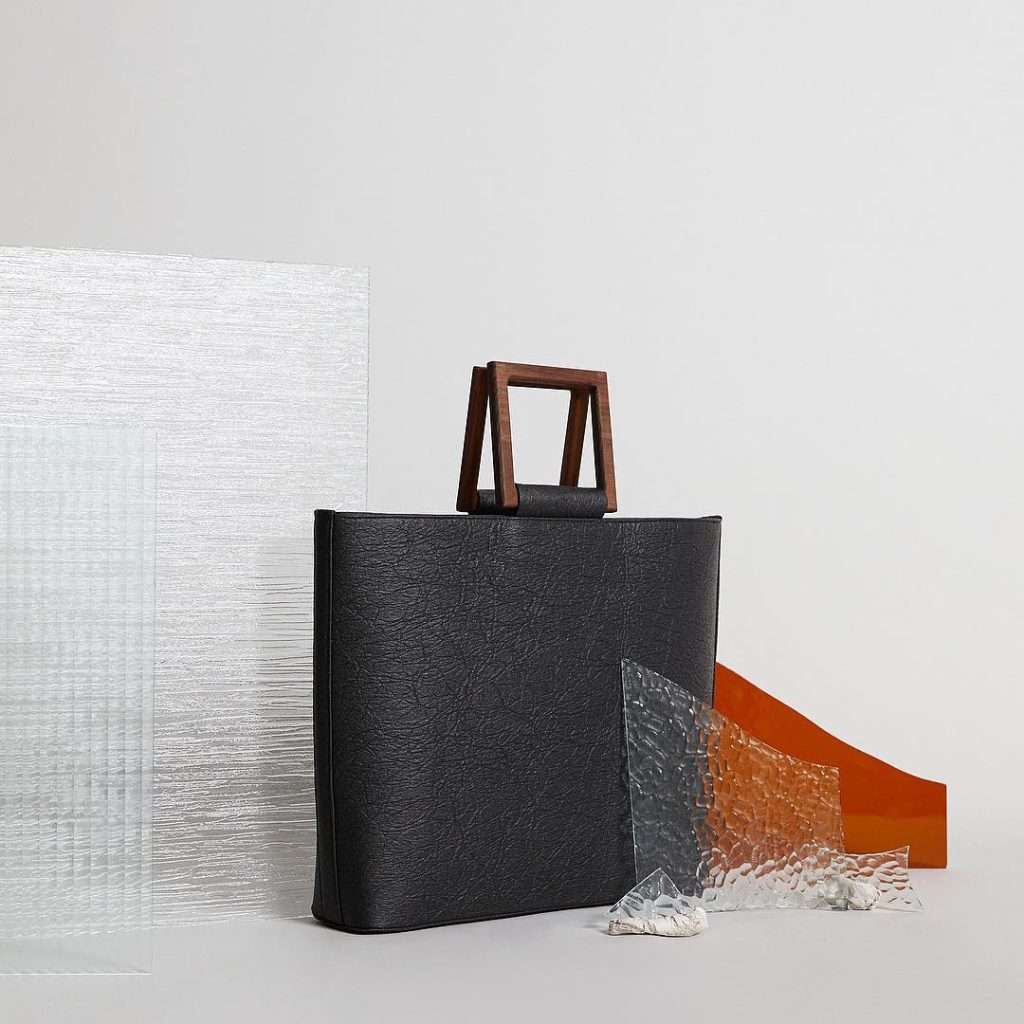
1. Pineapple
Made from the cellulose fiber of pineapple leaves, which becomes waste after harvesting, pineapple leather is tough and durable. It is increasingly used for furniture and accessories and has become the darling of the sustainable fashion industry. Hugo Boss launched a range of pineapple leather shoes in 2019. Plus, who doesn’t love saying their shoes or handbags are made from tropical fruit? Additionally, pineapple leather provides a secondary revenue stream for small-scale farmers in developing communities.
Companies like Ananas Anam are making pineapple leather mainstream. It recently partnered with Dole, the world’s largest pineapple grower, to use its pineapple waste to create more leather — so expect to see more of this soon.
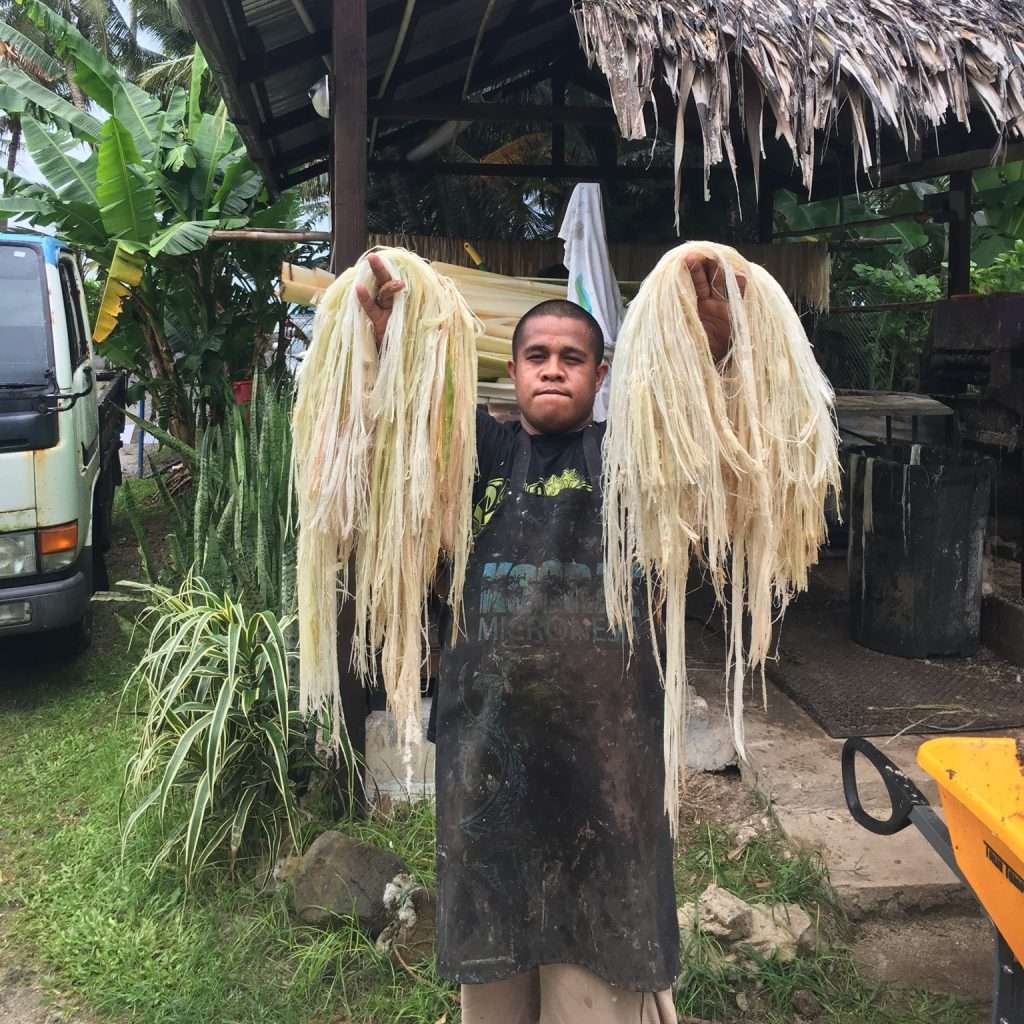
2. Banana Leaf
Banana trees grow quickly, so they are fairly sustainable, as far as trees go. But did you know they only bear fruit once? They are chopped down after that in order to make way for new fruit-bearing trees. The world consumes more than 100 billion bananas per year. By making the materials from the felled trees into a leather-like substance, it reduces the waste from those chopped trees and makes gorgeous wallets.
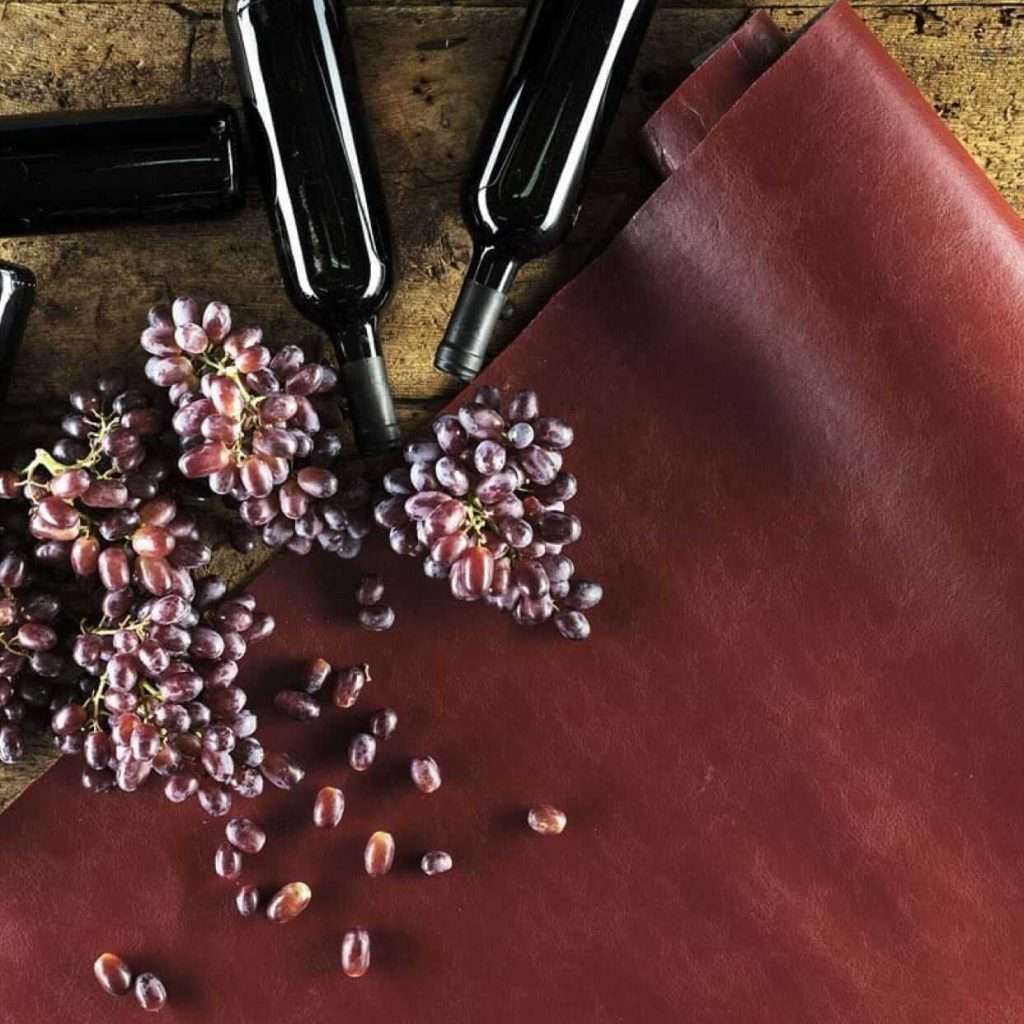
3. Wine Grapes
Grape skin and seed fibers are usually byproducts of the wine industry. By using existing machinery, production costs are kept low. Moreover, seven billion kilos of grape waste – or mare, as it is called — can produce up to three billion square metres of wine leather. Italian company Vegea is leading the way, and, in 2017, was awarded a €300,000 Global Change Award. The product has already been used by fashion brands like H&M.
4. Apples
The apple industry is a treasure trove of material. Pulp discarded after juicing; secondly as well as misshapen “ugly” apples are fodder for leather. The result? A PETA-approved ‘leather’ like this one from Samara. It’s also the base of the new watch bands from Samsung. And Coperni is using it, too.
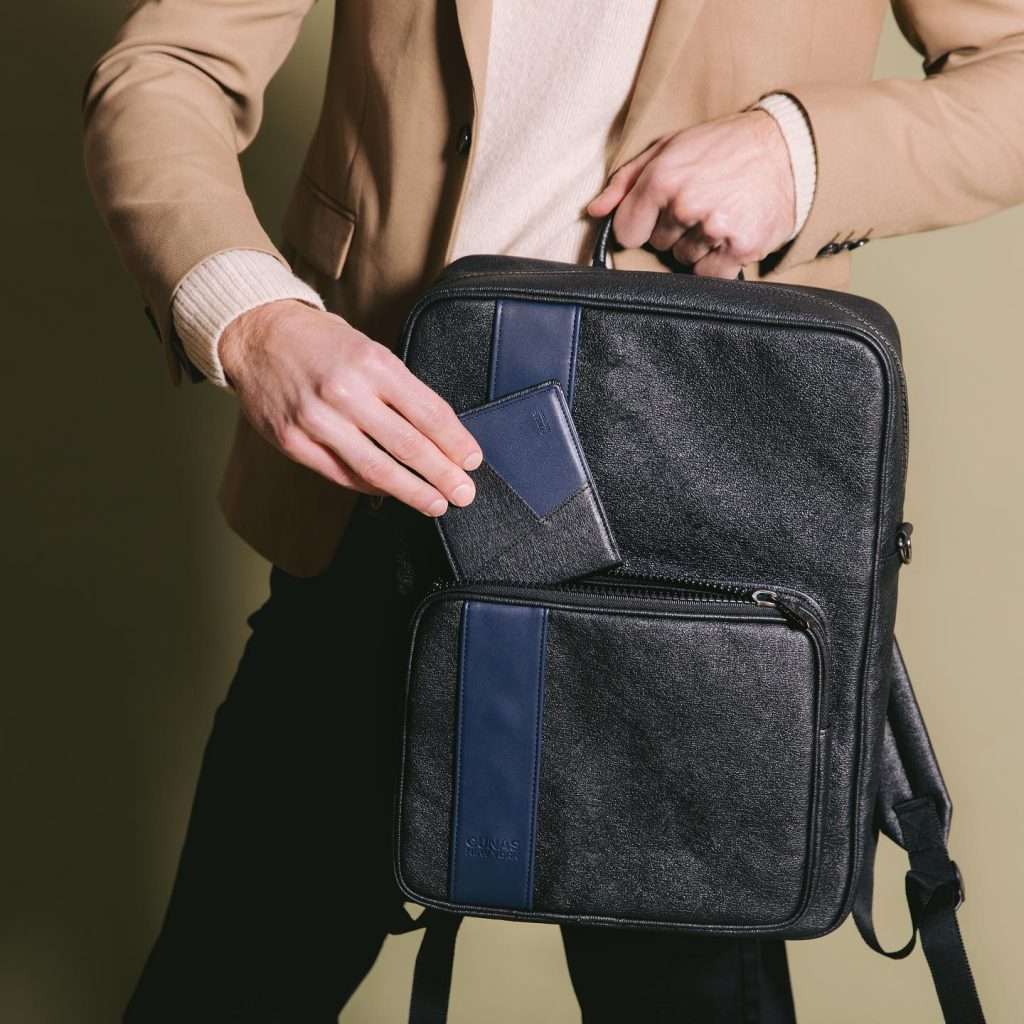
5. Mulberry
The paper pulp of mulberry tree leaves creates MulbTex, a material that can coat cotton canvas. Once glazed with tree sap, it’s a water-resistant alternative to leather. It’s a win for silkworms, too. Their staple diet of mulberry leaves sees them killed to extract the silk protein from them: this textile goes right to the source and leaves the worms out of it.
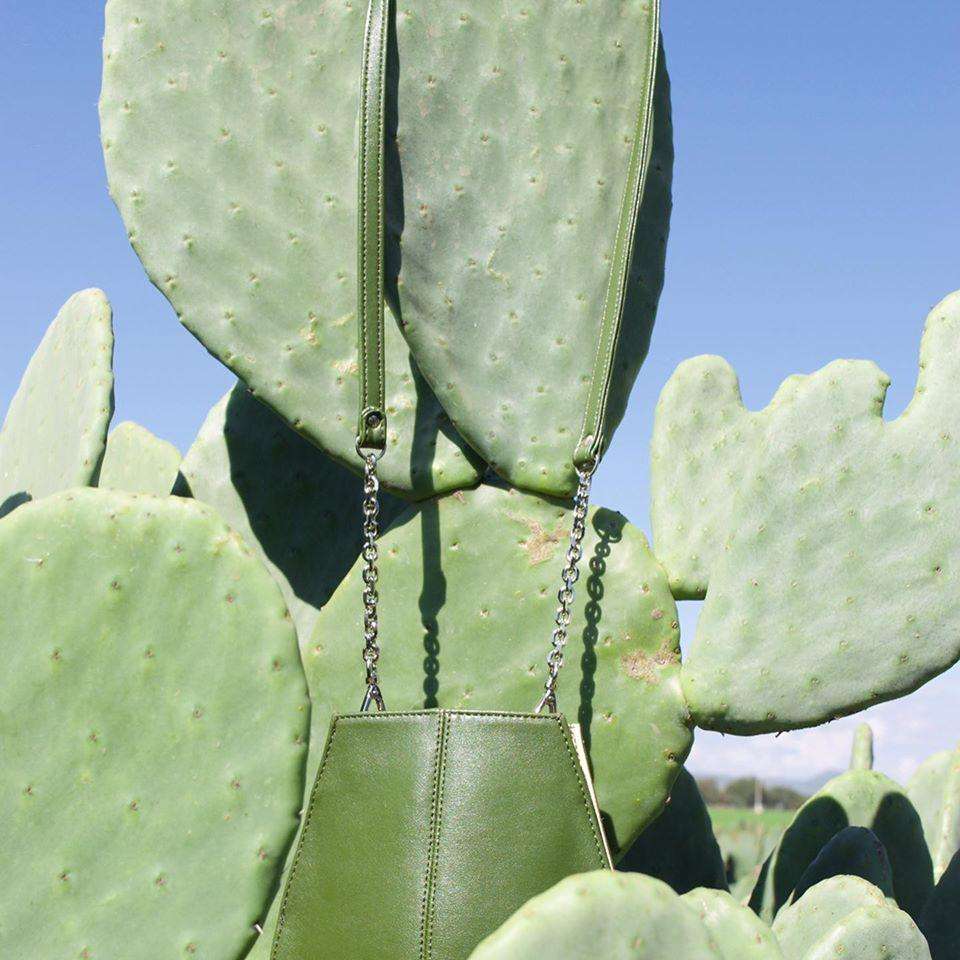
6. Cactus
Cactus is soft yet durable, so already, it has some of the hallmarks that make it suitable as a leather alternative. As desert plants, cacti don’t require much water. Desserto is making leather from cactus. The Mexican startup recently debuted its leather made for car interiors alongside BMW, and its apparel leather featured in the Amber Valletta-designed bag for Karl Lagerfeld, and in the first vegan leather penny loafers from G.H. Bass.
7. Coconut
Coconuts can do anything. From yogurt to meat to leather, too. Malai, a startup in India, has devised a way to grow bacterial cellulose from coconut water. The resulting biocomposite can then be crafted into a leather-lookalike that’s tough enough for everythng from shoes to bags. “I wanted to create and develop methods and materials that didn’t have such a negative impact on our environment. The idea with Malai is to create a vegan alternative to leather that is eco-friendly to make and dispose of,” founder Zuzana Gombosova told the Hindustan Times.
8. Flowers
Another Indian startup, Phool, is making ‘fleather’, this alternative to leather is made from flowers used for prayer ceremonies and collected from temples in India. Additionally, it provides a source of income for local women, who collect the discarded blooms.
Fungi and Yeast
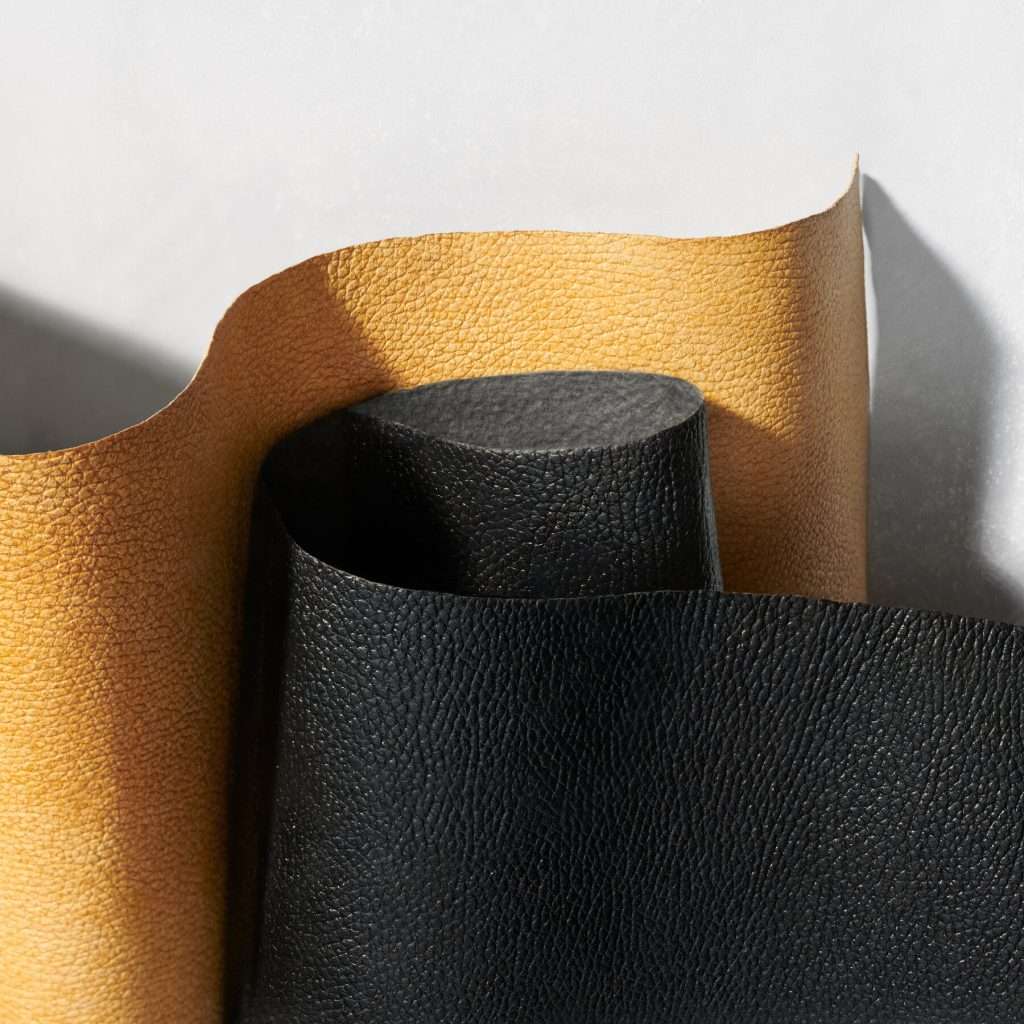
9. Mushrooms and mycelium
Mushrooms are going to play a big part in our sustainable future. One vegan leather showing tremendous promise is mycelium—the root structure of mushrooms that can be used like leather with similar texture and durability. The process is simple, quick, and requires minimal equipment and other ingredients.
Also, because makers use the roots rather than the mushrooms, it can be done anywhere, regardless of light conditions. Brands like Ecovative and Muskin are bringing mushroom leather mainstream. French-American designer Nick Fouquet recently launched a range of hats made from MycoWorks’ mushroom leather—the same material Hermès used in its vegan leather bag prototype. Balenciaga also recently released a coat made entirely from Sqim’s mycelium leather. It’s beloved by Stella McCartney as well.
10. Yeast
New Jersey-based Modern Meadow is growing animal-free leather. The company’s scientists have the ability to manipulate its qualities, so that it can resemble various types of skin, such as ostrich or alligator. The process involves gene-edited yeast, which produces liquid collagen. From this, durable, fibrous material is made, and it only takes about two weeks to produce the leather. The company has already created quite a stir, with attention from sports brands and fashion brands alike.
Recycled materials
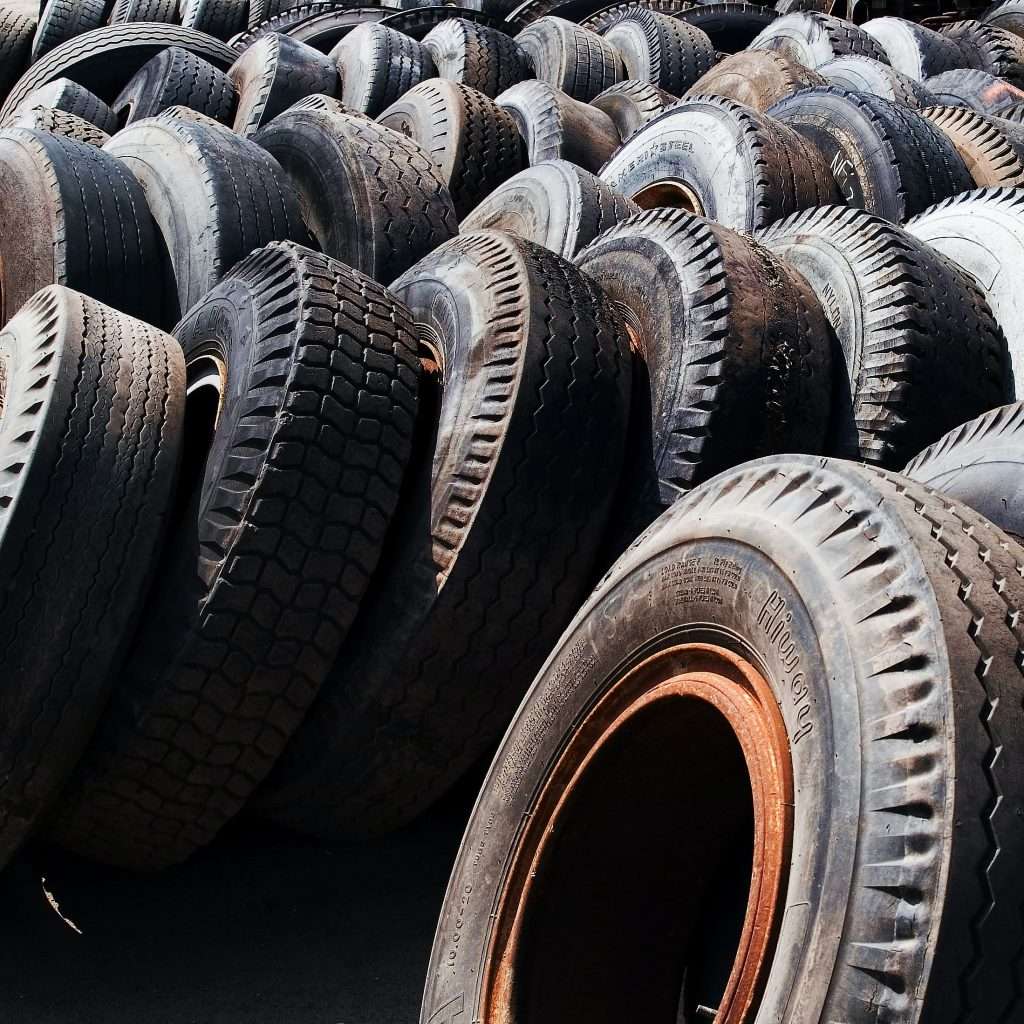
11. Recycled tires
Tires take hundreds of years to break down in landfills. With more than 1.5 billion tires reaching the end of their useful on-road life each year, globally, that’s a big problem. Their durability means that there are increasingly innovative ways to recycle them. Examples include bags, purses, and luggage. A number of brands like Ganesh Himal are making use of recycled tires in bags and wallets.
12. Upcycled plastic
We all know that plastic pollution is a huge problem. Reducing our use is one solution, but what of all the waste that’s already out there? How about collecting it up and making it into plastic flakes? Once melted down, these then become the basis of a polyester fiber. A single yard of the resulting textile uses no fewer than 18 plastic bottles—bottles that would otherwise end up in landfills or the ocean.
Parley for the Oceans has created plastic fiber that is often used in Adidas vegan leather shoes, and a number of brands are using recycled plastic in designs, including Italian luxury label Valentino, which featured recycled plastic materials in its first eco vegan sneakers.
Related on Ethos:

